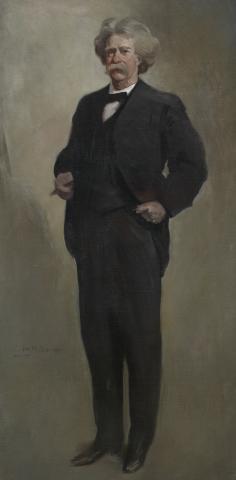
Samuel L. Clemens (Mark Twain) (1835–1910)
Under the pen name Mark Twain, Samuel Clemens had become one of this country’s favorite satiric writers by 1873, when he published an article in the New York Tribune that opposed an early U.S. attempt to annex Hawai‘i. Later, after witnessing the exploitative nature of colonialism on a trip he made to a handful of British colonies in 1895, he adopted a sharper political stance and attacked imperialism internationally.
Twain initially supported the United States’ war with Spain as a humane gesture to liberate Cuba, but his outlook soured upon reading the Treaty of Paris, where the United States took possession of the Philippines and suppressed its fight for independence. Twain subsequently became a figurehead of the American Anti-Imperialist League, which rejected the imposition of U.S. rule into foreign countries as contradicting the United States’ founding principles. In 1900, he wrote, “I am opposed to having the eagle put its talons on any other land.”